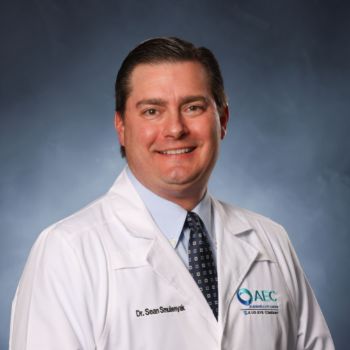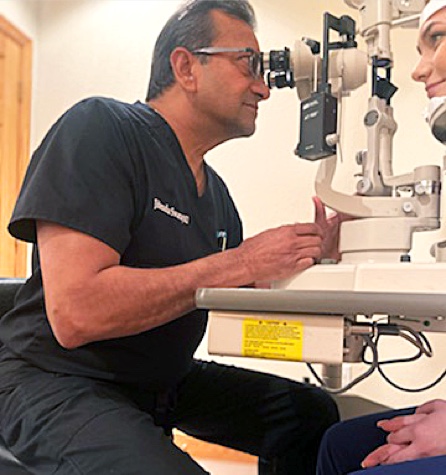Age-related macular degeneration (AMD) is the leading cause of irreversible blindness in the United States. The disease affects the macula at the back of the eye, which is the part of the retina that lets people see fine detail, facial features, or words on a page. AMD is not painful and how quickly the disease progresses varies from person to person, and from eye to eye. AMD can be diagnosed by an eye doctor during a comprehensive eye exam.
There are two types of AMD: wet and dry. About 85% of people with AMD have dry AMD. In dry AMD, fatty deposits called “drusen” build up in the macula. As the size and number of these deposits increase, so does your risk of developing the more severe form of AMD, called wet AMD.
Dry AMD symptoms may include blurry vision, such as difficulty seeing sharp details, both up close and from a distance, even with glasses. However, many people with dry AMD do not notice any changes in their vision over time. When the disease advances rapidly, it may lead to sudden and severe vision loss.
Most importantly, dry AMD increases the risk of progressing to wet AMD, which can cause significant vision loss without treatment. Dry AMD can suddenly change to wet AMD without notice. Wet AMD can severely impact quality of life and limit independence making many daily activities impossible; like driving, reading, watching television, or using a computer.
There is currently no treatment for dry AMD but there are things that can be done to help reduce the risk of developing wet AMD. These include healthy lifestyle choices, like not smoking, and taking eye vitamins daily if recommended by a doctor.
Advanced at-home monitoring technology is available that is sensitive to changes in AMD. The ForeseeHome® AMD Monitoring Program is an easy-to-use early warning system for eyes that can catch the progression from dry to wet AMD as soon as it happens, which lets a doctor intervene at the first signs and determine the appropriate course of action. ForeseeHome is FDA-cleared and covered by Medicare.
Treatments exist and have improved over time for wet AMD. Most commonly, injections of certain medications into the eye can reduce leakage and bleeding. In some cases, vision can also improve with treatment, but it is not guaranteed. The ultimate goal is to preserve as much vision as possible.
Macular degeneration can be a scary disease for patients. However, with regular eye exams and the use of modern technologies and medications, vision can often be preserved allowing for an excellent quality of life.
Written By: Sean Smolenyak, O.D.
Albemarle Eye Center, Edenton, NC


















